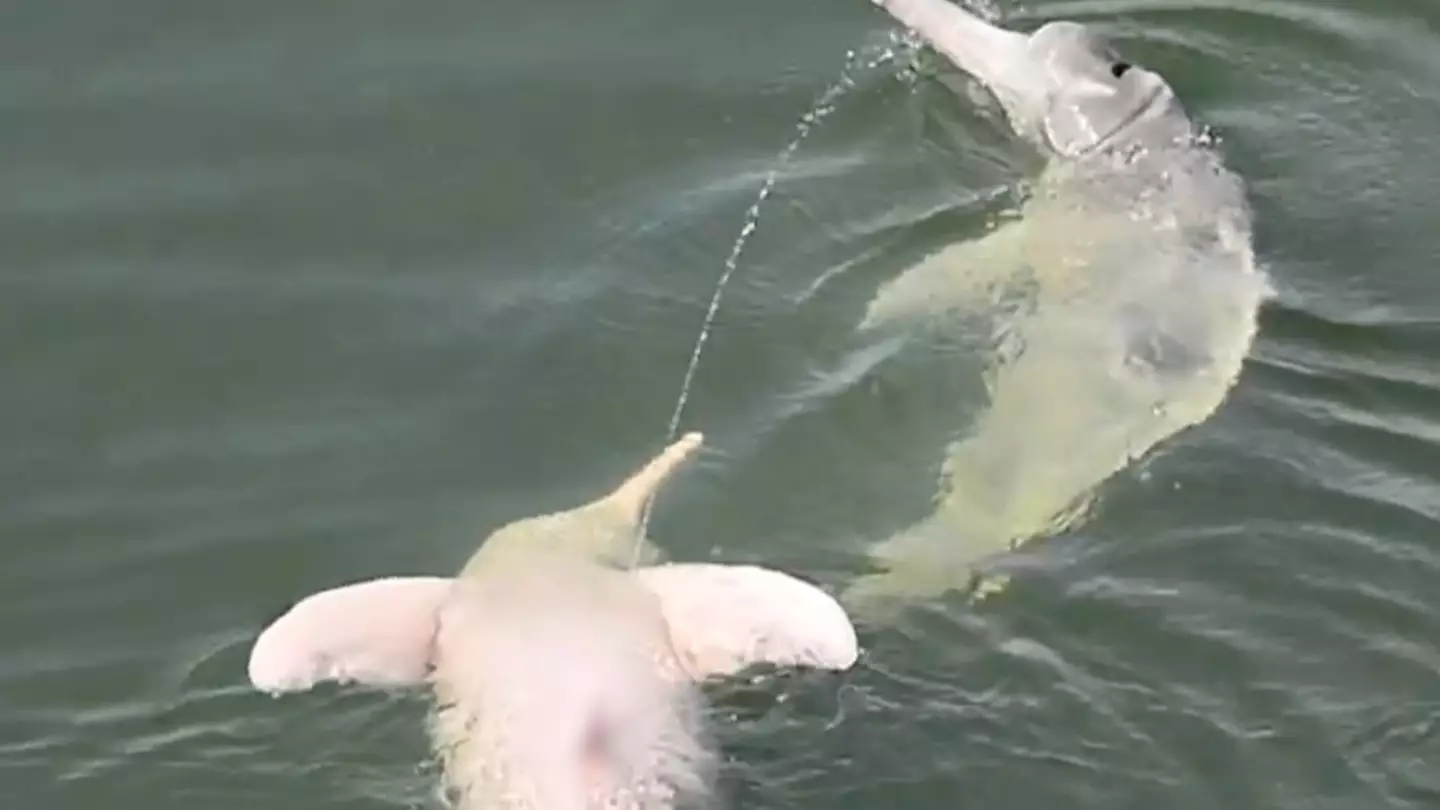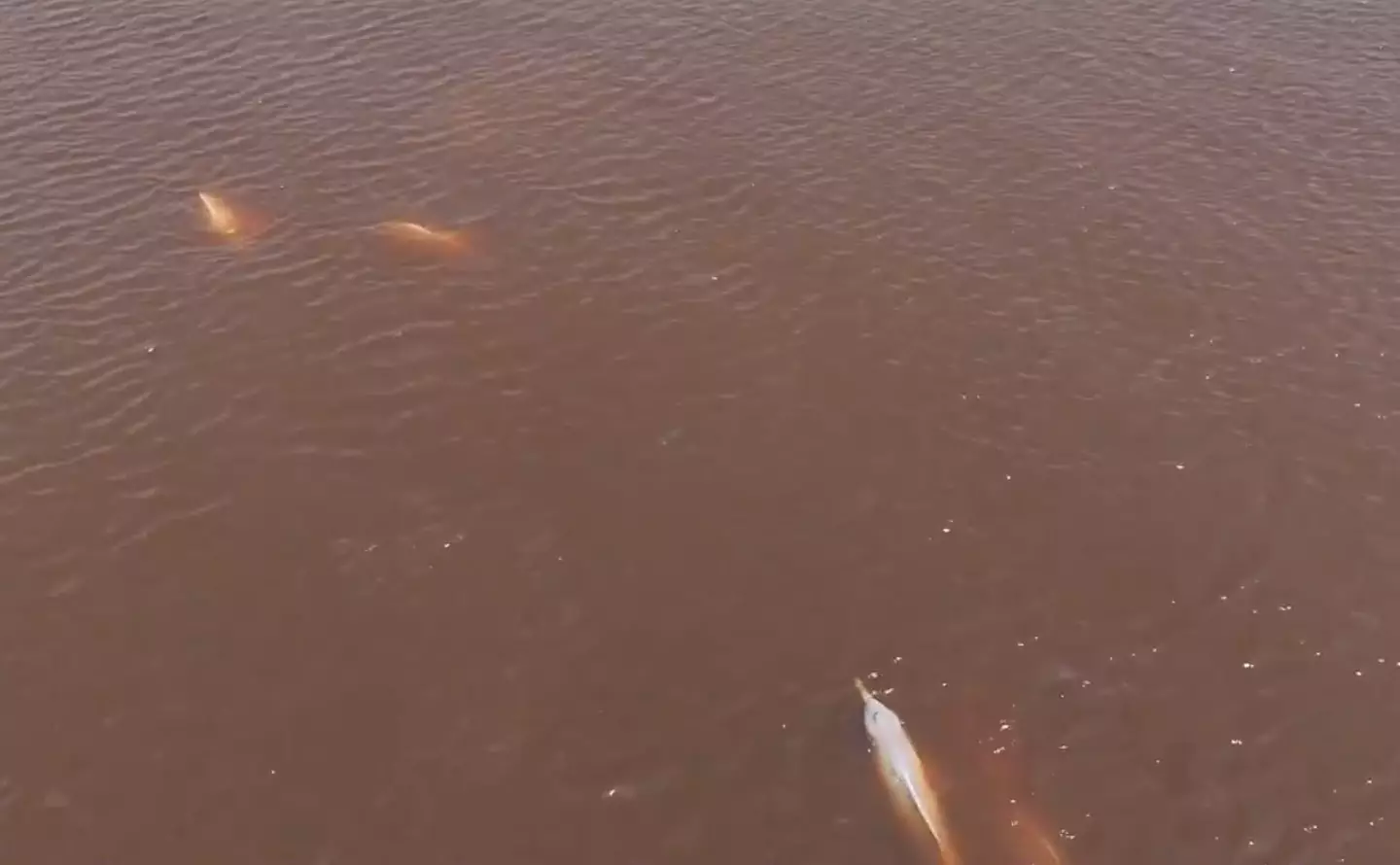
The animal kingdom just got a little bit weirder as researchers spotted this surprising behavior from Amazon dolphins.
Scientists who study animals for a living can tell us just about everything about their chosen creatures, which makes this revelation even more interesting.
Researchers recently spotted male dolphins perform an odd act, seemingly unnecessarily, and are trying to work out what exactly was happening.
Advert
Claryana Araújo-Wang at CetAsia Research Group in Ontario, Canada and her group captured the bizarre moment while they were studying Amazon river dolphins in the Tocantins river in central Brazil.

Araújo-Wang told New Scientist: “On the first occasion, we saw a male flip his belly up out of the water, expose his penis and then proceed to urinate into the air.
“We were really shocked, as it was something we had never seen before.”
Advert
Researchers have so far attempted to understand what the intention is by the move.
Araújo-Wang and her colleagues observed the dolphins for around 219 hours and saw the males fire urine into the air a total of 36 times.
On average, the stream of pee reached about one meter high before landing one meter in front of the animal.
To add an extra layer of complexity to this phenomenon, two thirds of the time this occurred, a male was present, and interestingly the other male would then approach, and sometimes pursue, the urine stream with its snout or rostrum.
Advert
Other times they waited in the area where the stream of urine landed in the water.
To us, this might seem pretty gross, but the scientists think the dolphins are doing this for an important reason.
Attempting to explain this behavior, the researches guessed that dolphin’s rostrum might act as chemical sensors to detect urine and interpret social cues.
Araújo-Wang told BBC Wildlife: "This behaviour will require more research, however, we hypothesise that aerial urination helps in advertising male quality in terms of social position or physical condition."
Advert
The researchers concluded in the study: "Aerial urination likely serves a social function beyond waste elimination."
A previous study by Jason Bruck also highlighted that bottlenose dolphins have an intriguing ability that may be similar to this phenomenon.
In the 2022 study, he and his Austin State University colleagues found that these dolphins can use their tongues to identify different individuals underwater by the taste of their urine.

Advert
Reflecting on this new development, he admitted that he was skeptical the dolphins are picking up social cues however.
He told New Scientist: “It would be fascinating to see if this behaviour from the river dolphins relates to this ability.
“It seems unlikely that botos are processing complex social cues using just the hairs on their rostrum.”